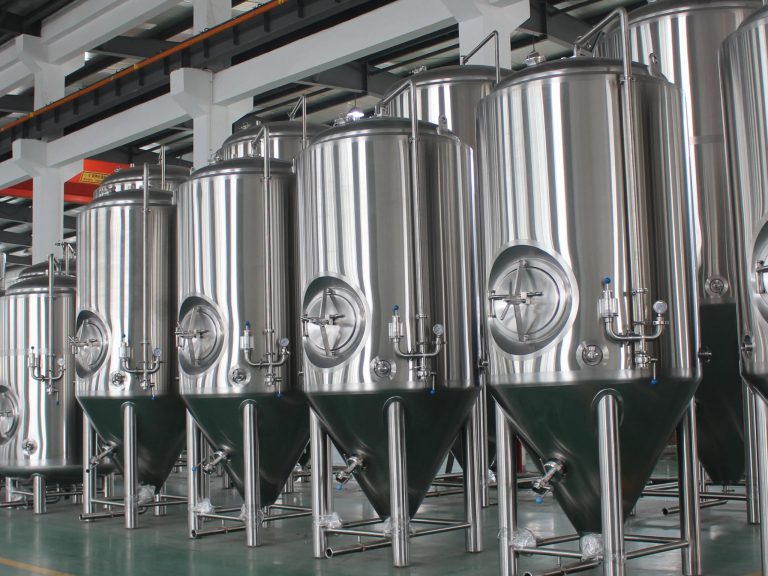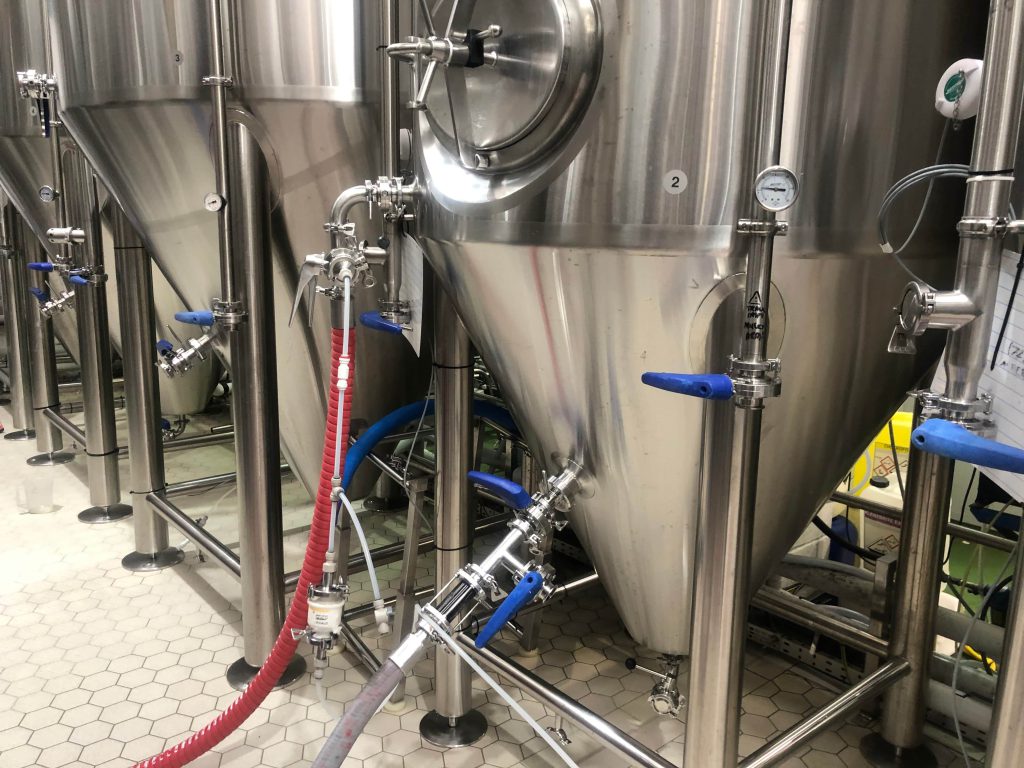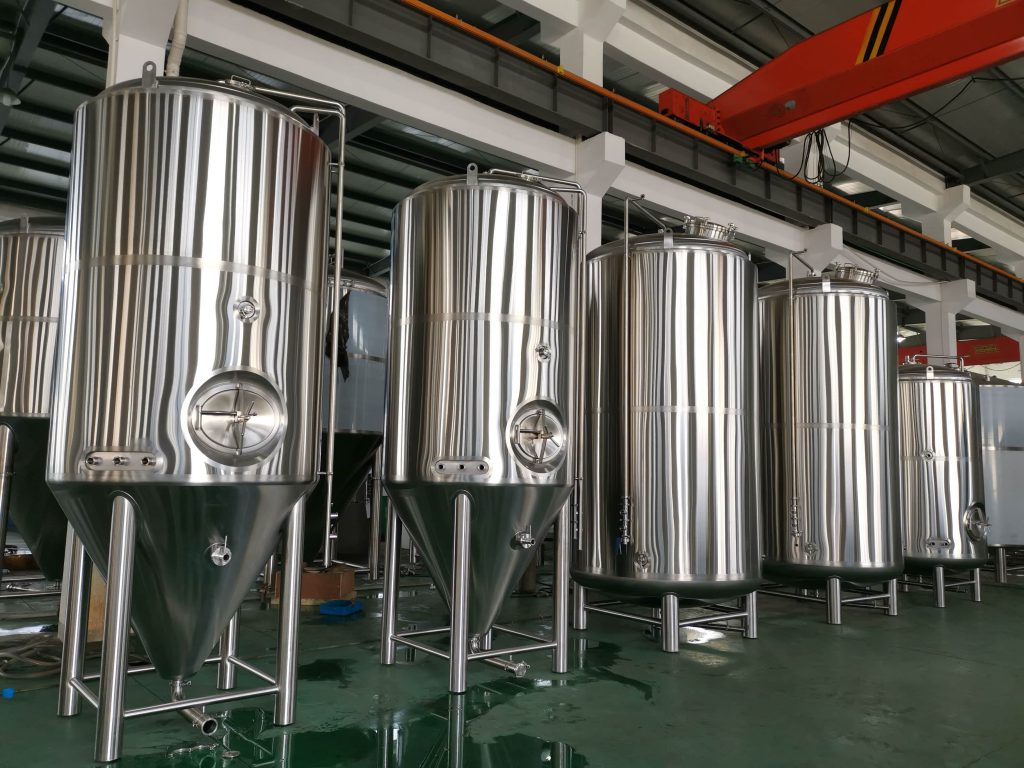Einführung

Im Bereich der Kochkunst und Getränkeherstellung spielt die Wahl der Gärgefäße eine entscheidende Rolle bei der Gestaltung des endgültigen Geschmacksprofils von Produkten. Von traditionellen Eichenfässern bis hin zu modernen Edelstahltanks verleiht jedes Gefäß einzigartige Eigenschaften, die Geschmack, Aroma und Textur beeinflussen. Dieser Blog untersucht die tiefgreifenden Auswirkungen moderner Gärgefäße auf die Geschmacksverbesserung und befasst sich mit ihrer Konstruktion, ihren Vorteilen und ihrer Anwendung in verschiedenen Branchen.
Die Rolle von Fermenting Vessels in Flavor Development
Fermenting vessels are pivotal in the fermentation process, where yeast and bacteria interact with ingredients to produce alcohol, acids, and other compounds that define taste. The materials and design of these vessels significantly influence flavor development. For instance, oak barrels are renowned for their ability to impart complex flavors through micro-oxygenation and interaction with wood compounds, whereas stainless steel tanks offer cleanliness, precise temperature control, and preservation of fruit-forward flavors.
Types of Advanced Fermenting Vessels
- Oak Barrels: Oak barrels have been a staple in the beverage industry for centuries, particularly in aging wines and spirits. The porous nature of oak allows for gradual oxygenation, which softens tannins and enhances complexity. The wood itself contributes flavors such as vanilla, spice, and sometimes a hint of smokiness, depending on the toasting level of the barrel.
- Edelstahltanks: Modern stainless steel tanks are favored for their inert nature, which preserves the purity of flavors. They are easy to clean and sanitize, crucial for maintaining the integrity of delicate wines and ensuring the absence of off-flavors. Temperature control in stainless steel tanks allows for precise fermentation conditions, ideal for producing crisp white wines or maintaining the fruity esters in beer.
- Concrete Tanks: Emerging as a choice for winemakers and brewers seeking a vessel that offers stability in temperature fluctuations. Concrete tanks are favored for their thermal mass, which provides a steady environment for fermentation without abrupt temperature changes that can stress yeast or bacteria. The porous nature of concrete allows for a gentle exchange of gases, contributing subtle minerality and texture to wines.
- Clay Amphorae: Often associated with ancient winemaking techniques, clay amphorae are making a comeback in artisanal wine production. Their porous structure allows for a gradual exchange of oxygen, similar to oak barrels but with a more neutral influence. Clay imparts earthy and mineral flavors, enhancing the terroir expression of wines while allowing for a natural fermentation process.
Case Studies: Flavor Enhancement Through Vessel Selection
Case studies provide tangible examples of how specific vessel choices have influenced flavor profiles in beverages. For instance, renowned wineries have documented how switching from oak barrels to concrete tanks has resulted in wines with enhanced minerality and purity of fruit expression. Breweries experimenting with clay amphorae have observed improved texture and mouthfeel in their sour beer varieties due to the natural microflora supported by clay’s porous structure.
Innovations in Fermenting Vessel Technologie
Recent innovations in vessel design have further expanded the possibilities for flavor control and consistency. Adjustable bungs, which allow winemakers to regulate oxygen exposure during aging, and micro-oxygenation systems in stainless steel tanks, which mimic the gradual oxygenation of oak barrels, are examples of advancements that cater to specific flavor goals.
Practical Applications Across Industries
- Craft Brewing: In craft brewing, fermenting vessels contribute significantly to the final character of beers. For example, oak barrels are prized for aging stouts and sours, imparting complex flavors like vanilla and bourbon notes, while stainless steel tanks are preferred for maintaining the freshness and hoppy aroma of IPAs.
- Fine Wine Production: Winemakers meticulously select fermenting vessels to achieve desired flavor profiles. Oak barrels are crucial for imparting structure and complexity to red wines, whereas concrete tanks are preferred for enhancing the minerality in Chardonnays and Sauvignon Blancs.
- Artisanal Spirits: Vessel selection is equally critical in distilling premium spirits. Oak barrels are indispensable for aging whiskies and brandies, where they impart characteristic flavors and smooth out the spirit’s harsh edges over time.
Enhancing Efficiency and Sustainability
Beyond flavor, advanced fermenting vessels offer practical benefits such as energy efficiency and sustainability. Stainless steel tanks, for example, require less cleaning and use fewer chemicals compared to wooden barrels, reducing water usage and environmental impact. Concrete tanks, with their longevity and recyclability, contribute to sustainable winery practices by minimizing waste and resource consumption.
Appendix: Comparative Table of Fermenting Vessel Characteristics
| Schiffstyp | Material | Flavor Influence | Vorteile | Nachteile |
|---|---|---|---|---|
| Oak Barrels | Oak wood | Complex, oaky, vanilla | Micro-oxygenation, tradition | Costly, maintenance |
| Edelstahl | Edelstahl | Clean, pure, fruit-forward | Durability, temperature control | Less micro-oxygenation |
| Concrete Tanks | Concrete | Minerality, thermal stability | Natural integration, longevity | Porous, weight |
| Clay Amphorae | Clay | Earthy, porous | Natural, breathability | Fragile, artisanal |
Exploring Flavor Potential with Advanced Fermenting Vessels

By harnessing the capabilities of advanced fermenting vessels, producers can elevate their products to new heights of flavor complexity and consistency. Whether crafting fine wines, brewing artisanal beers, or distilling premium spirits, the vessel choice remains a cornerstone of flavor enhancement in the culinary and beverage industries.
Abschluss
The choice of Gärbehälter is a critical determinant of flavor excellence across various industries. By understanding the nuances of vessel materials, designs, and technological innovations, producers can unlock new dimensions of taste and quality in their products. Whether aiming for bold complexity in wines, nuanced subtleties in beers, or smooth refinement in spirits, the right fermenting vessel can make all the difference.
Häufig gestellte Fragen
Q:How do oak barrels influence flavor profiles?
A:Oak barrels impart flavors such as vanilla, spice, and tannins through a process of gradual oxygenation and interaction with wood compounds.
Q:What are the advantages of stainless steel tanks?
A:Stainless steel tanks offer cleanliness, precise temperature control, and preservation of fruit-forward flavors without imparting additional flavors from the vessel material.
Q:Can Gärbehälter affect the texture of beverages?
A:Yes, vessels like clay amphorae and concrete tanks can contribute to the texture and mouthfeel of beverages through their porous nature and interaction with fermenting microorganisms.

